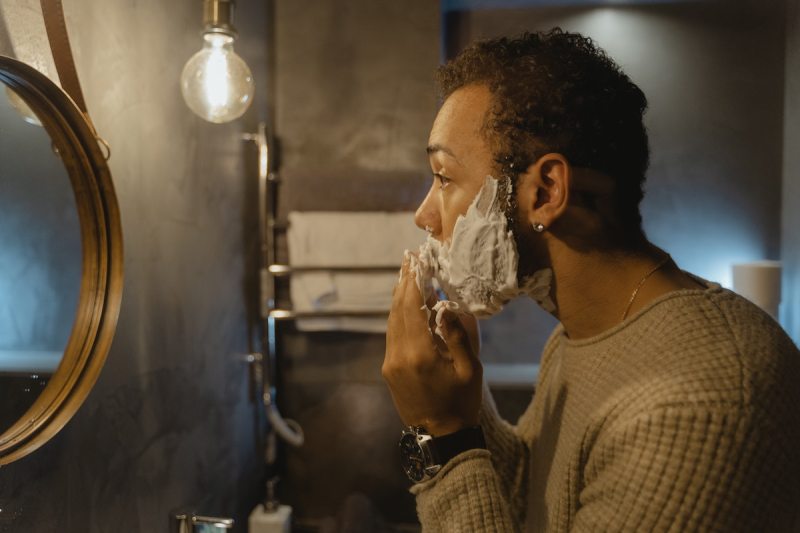
Getting razor burn can be uncomfortable, and it can make it seemingly impossible to continue shaving without further aggravating your irritated skin. It’s also extremely common and can occur wherever you shave, including your more intimate manscaping areas. If you have it, you’ll want to know how to get rid of razor burn — stat.
Fortunately, there are ways to prevent as well as ways to ease razor burn should your skin already have the dreaded painful, warm, itchy redness that is characteristic of razor burn. Keep reading for the best tips to prevent and treat razor burns for men.
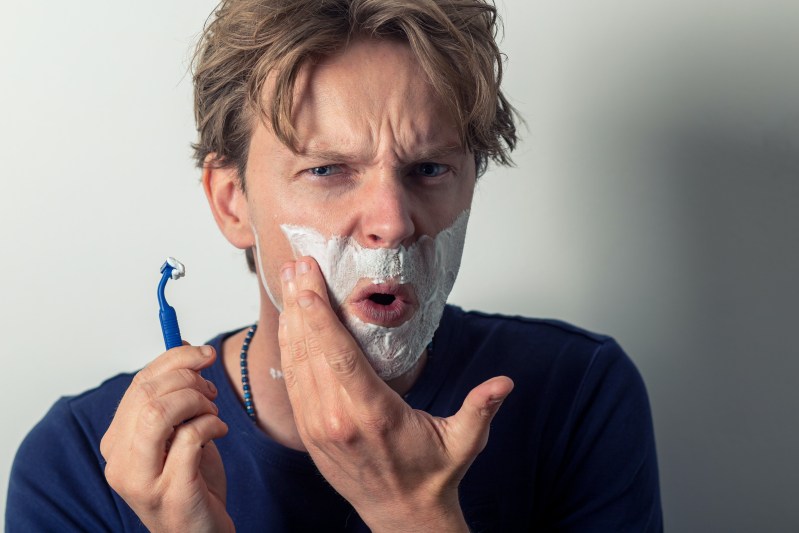
What is razor burn?
Razor burn refers to an irritation of the skin caused by shaving. It can result in redness, tenderness, localized warmth, swelling, itchiness, and small red bumps. Though razor burn on the face is not only irritating but obvious, it can happen anywhere you shave.
Razor burn vs. razor bumps
Razor burn is not the same as more significant red razor bumps, as the latter is typically indicative of ingrown hairs.
These ingrown hairs typically occur after plucking or waxing hairs. The hair grows at the wrong angles, curls back, and begins to grow into the skin — causing sensitive “bumps” that can resemble acne. Razor bumps are aggravated hair follicles just like razor burn, but the root cause is different — no pun intended. For this reason, it’s incorrect to use “razor burns” and “razor bumps” interchangeably — a common error.
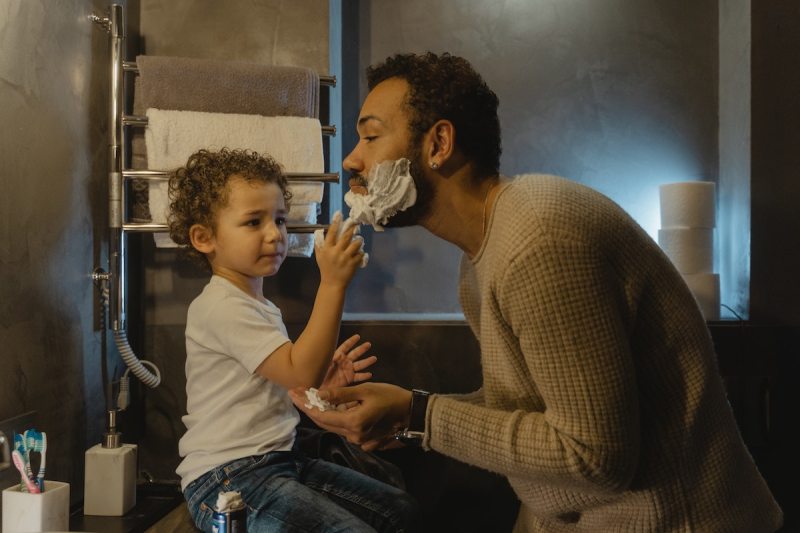
What causes razor burn?
There isn’t necessarily one distinct cause of razor burn. Rather, the irritation can occur from any number of factors during the shaving process, such as the following:
- Using an old razor, especially one that is overly dull
- Shaving too much over a given area of skin
- Shaving against the grain of your hair growth
- Shaving without a pre-shaving product (shaving gel, cream, etc.) that contains an emollient, which is a moisturizing ingredient that helps to prevent razor burn
- Using shaving products that irritate your skin
- Shaving too quickly and vigorously, slow and steady is the better way to go
- Shaving too often
How to treat razor burn
Getting rid of razor burn is possible, though you may need to use a few products or put shaving on hold temporarily. The following are tips to help get rid of razor burn:
Stop shaving
Though you may like the clean-shaven look best, dermatologists say the most effective natural razor burn treatment is to stop shaving for a few days until the razor burn clears. This will give your irritated skin a chance to calm down and heal. People with sensitive skin should especially avoid
Try aloe vera
You might be familiar with using aloe vera to soothe sunburns, and as it turns out, the same healing principles apply to razor burns. Coat the affected area with a thin layer of aloe vera several times per day. You can even chill it in the refrigerator first for an added boost of relief.
Alternate with warm and cool compresses
A cold compress, such as with a soft washcloth, can reduce inflammation and redness from razor burn. Use a warm compress before shaving to loosen hairs and open your pores.
Heal with coconut oil
A thin layer of organic, unprocessed coconut oil can accelerate razor burn healing. Coconut oil is antimicrobial, anti-fungal, nourishing, and can reduce inflammation.
Make an oatmeal paste
If you suffered from chickenpox as a child, chances are you have faint memories of taking oatmeal baths to ease the itching. Colloidal oatmeal soothes, moisturizes, and cleanses the skin, and can help relieve the discomfort from razor burn.
Use diluted tea tree oil
Tea tree oil is useful for treating acne, fungal infections, and other inflammatory skin conditions. It can also be used to get rid of razor burn. Just be sure to dilute tea tree oil in water or ideally, in a nourishing oil like almond oil (1 drop per teaspoon of almond oil) because it is too astringent otherwise and may exacerbate razor burn.
Hydrate with almond oil
Almond oil can help treat razor burn and nourish dry and irritated skin. However, if you have naturally oily skin or are prone to acne, this may not be the best razor burn treatment for your skin.
Make an avocado mask
Make a smooth purée of ripe avocado and apply it to the area with a razor burn for a natural salve and healing relief. The oils and vitamin E will reduce inflammation and irritation.
Apply hydrocortisone cream
Hydrocortisone cream is one of the most effective ways to get rid of razor burn. It’s a topical steroid that reduces inflammation, itching, and redness. However, it can thin the skin, so it’s best to avoid using hydrocortisone to treat razor burn long-term.
Treat trouble areas
If you have particularly severe patches of razor burn with painful red bumps, treat them with a cocktail of hydrocortisone followed by an over-the-counter bacitracin ointment like Neosporin, which will help kill any bacteria. Lastly, dab the area with a salicylic acid gel (1-2% strength) to remove excess oil from the bump.
How long does razor burn last?
It will take a few days for mild razor burn to go away. If you have more severe razor bumps, healing time will be extended to a week or more depending on the severity. Do not shave over the razor bumps, and it’s best to avoid shaving even over mild razor burn, as doing so is likely to exacerbate the irritation. Razor burn that is not healing on its own or lingers chronically should be addressed with your dermatologist.
Tips for preventing razor burn
As the old adage goes, “An ounce of prevention is worth a pound of cure.” Preventing pesky razor burns will save you from the discomfort and unsightly red bumps, so if you’re noticing you are frequently getting razor burns, it’s time to examine your shaving routine. Here are a few tips for preventing razor burn:
- Shave after showering so that your skin is soft and your hairs are looser in your pores. You can even apply a warm compress over the last five minutes of the shower to further open your pores and soften your skin.
- Shave in the direction of your hair growth and try not to go over the same area multiple times.
- Rinse your razor blade frequently as you’re shaving.
- Shave less often.
- Ensure the shaving products you are using do not contain ingredients that you’re sensitive to.
- Use a sharp razor. Replace your razor blades as soon as they start to dull. Some dermatologists also suggest switching to an electric razor if you’re chronically getting razor burn.
- Cleanse the skin with an exfoliating cleanser that contains glycolic acid, such as Jack Black Deep Dive Glycolic Facial Cleanser, prior to shaving to prevent ingrown hairs and clogged pores.
- Always use a lubricating shaving gel or shaving oil when you shave and a moisturizer directly afterward.
Is the razor the issue?
There are hundreds of different razors on the market today, and it can feel overwhelming to find the one that’s right for you. If you have sensitive skin or thick or coarse facial hair, or you’re struggling to find a razor that gives you a clean shave without damaging your skin, you might have better luck with a safety razor.
The single razor blade on a safety razor gives you one of the closest shaves possible without causing excess irritation. They work especially well for people with thick facial hair or a perpetual 5 o’clock shadow. Go slow at first — safety razors are less likely to give you razor burn, but it’s easier to cut yourself with one of these. They also tend to be a bit heavier than regular razors, which could take some getting used to.
Recommended products to prevent razor burn
Jack Black Deep Dive Glycolic Facial Cleanser
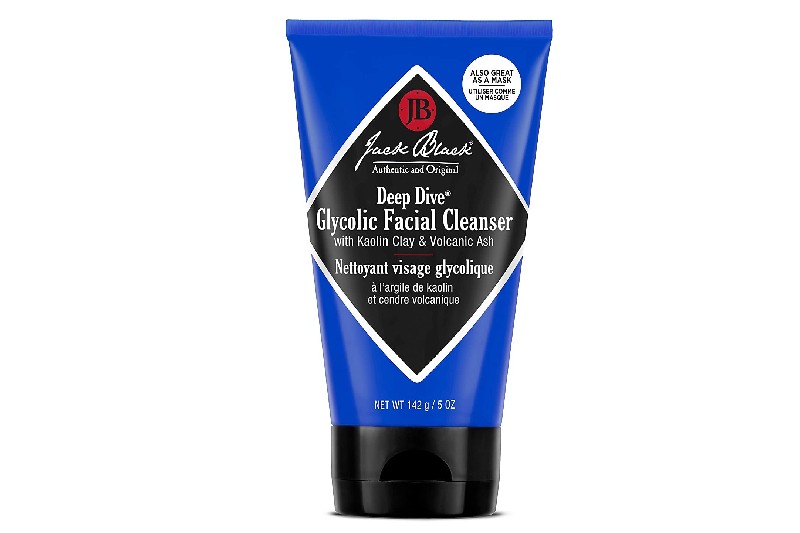
Panasonic ARC5 Electric Razor for Men with Premium Automatic Cleaning and Charging Station
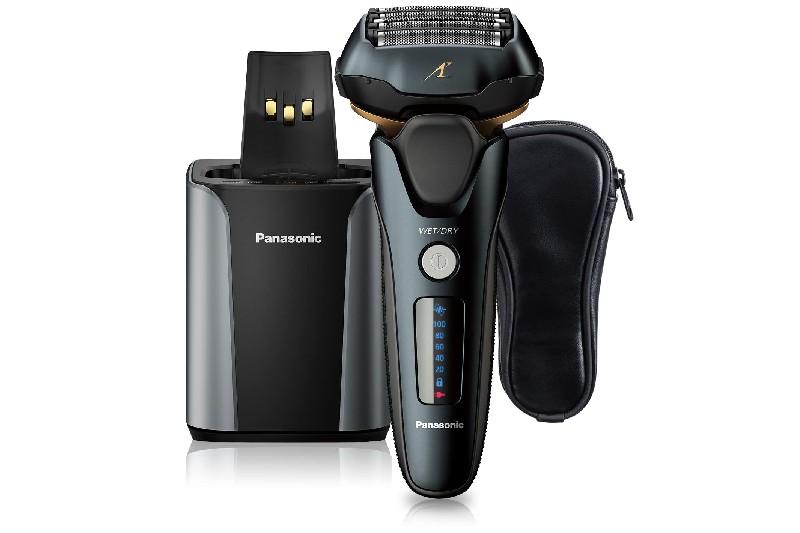
Nivea Men Sensitive Post Shave Balm

MARLOWE. No. 201 Everyday Face Kit for Men
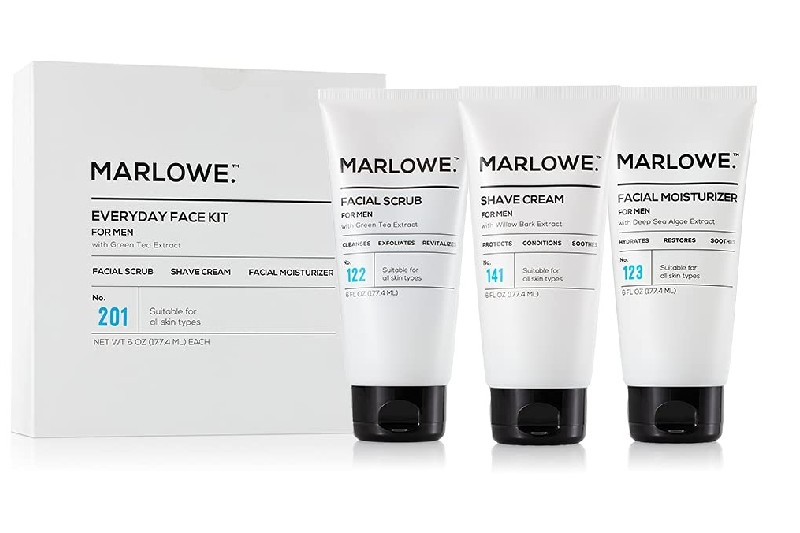

How often should I shave?
Earlier on, we told you that one way to prevent razor burn is to shave less often, but how often should you be shaving your face? Well, first, it somewhat depends on the look you are going for. If you want to have a bit of a scruffy look, you don’t want to shave every day; you’ll be better off
Unless you grow facial hair at an alarmingly fast rate, shaving every day isn’t overly necessary to keep your face looking relatively smooth, and as we’ve said before, it’s probably better for your skin to give it a break.
FAQs
When should I see a doctor?
Razor burn is usually painful but harmless. That said, if you notice signs of infection or it doesn’t clear up within the usual couple of days to about a week, it’s worth giving your doctor a ring. If your razor burn is infected, you may have welts or pustules. Your doctor can prescribe an oral antibiotic to treat the infection.
How do you get rid of razor burn fast?
Speed up healing by foregoing shaving until the razor burn clears up. Aloe vera, coconut oil, and alternating warm-cold compresses are all at-home remedies that can provide faster relief for razor burn. Razor burn will usually clear up in less than one week, though more severe cases may take longer. If you’re trying to look your best and need to hide razor burn, apply a small amount of concealer over the area.
Do razor burns ever go away?
Razor burns eventually heal after a few days, though it’s not uncommon for more severe burns to take a little longer — a week or more. One of the best things you can do as you heal is to avoid shaving.
Does Vaseline help razor burn?
Some swear by Vaseline for clearing up razor burns. It’s worth a try. If you find Vaseline causes more irritation, stop using it.
Editors' Recommendations
- How to get rid of those annoying blackheads once and for all
- How often should you change your razor blades?
- How to shave with a straight razor without hurting yourself
- Make grooming easy: The 8 best beard trimmers to get the job done
- How to get rid of dark circles under eyes once and for all







